Tequila's Pre-Columbian Origins
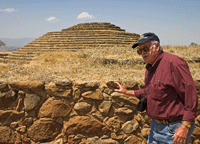 The valleys that lie
beside the volcano at the heart of the Tequila region were the home of
the a complex society that reached its peak between 200 BCE and 350 CE.
Archeologists estimate more than 50,000 people may have lived within 15
miles of the Tequila volcano. Known today as the Teuchitlán tradition
(named for the nearby town), this society was the cultural center of
West Mexico, with unique, complex architecture and a trade network that
stretched from Guatemala to Arizona.
The valleys that lie
beside the volcano at the heart of the Tequila region were the home of
the a complex society that reached its peak between 200 BCE and 350 CE.
Archeologists estimate more than 50,000 people may have lived within 15
miles of the Tequila volcano. Known today as the Teuchitlán tradition
(named for the nearby town), this society was the cultural center of
West Mexico, with unique, complex architecture and a trade network that
stretched from Guatemala to Arizona.
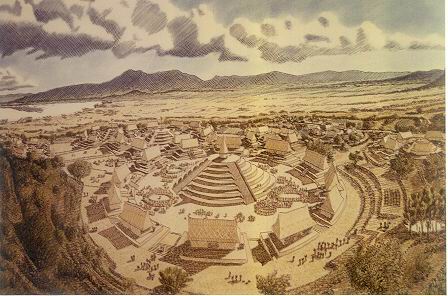
The Teuchitlan culture was already in decline and being replaced by
the El Grillo phase when the area was
subject to migrations of outsiders (possibly originating in nearby
Guanajuato) began to enter the area in the Epiclassic (550-900 CE). These newcomers were seem to have adopted the
Nahua* language, which was probably present in the Basin of Mexico.
Many Pre-Columbian people in Mesoamerica cultivated the agave.
Domestic agaves included (popular names in parentheses): Agave
zapota (sapodilla), Agave atrovirens (maguey), Agave fourcroydes
(henequen), Agave latissima (maguey). Agave mapisaga (maguey). Agave
sisalana (sisal) and Agave tequilana (tequil maguey).
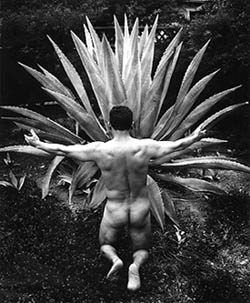 Agave nectar was known and widely used among the Pre-Columbian
cultures. Along with honey, it was used a flavouring for several dishes,
and as a sweetener when drinking chocolate. Both were highly valued and
traded extensively throughout Mesoamerica. These products augmented
other Mesoamerican foodstuffs: maize and posolli gruels and their atolli
and pinolli drinks. There is evidence that sweetmeat dessert-like
substances made with toasted squash seeds or popped amaranth seeds and
boiled agave syrup or honey were made and given as gifts and used as
ritual offerings.
Agave nectar was known and widely used among the Pre-Columbian
cultures. Along with honey, it was used a flavouring for several dishes,
and as a sweetener when drinking chocolate. Both were highly valued and
traded extensively throughout Mesoamerica. These products augmented
other Mesoamerican foodstuffs: maize and posolli gruels and their atolli
and pinolli drinks. There is evidence that sweetmeat dessert-like
substances made with toasted squash seeds or popped amaranth seeds and
boiled agave syrup or honey were made and given as gifts and used as
ritual offerings.
Mildly alcoholic (fermented) drinks called aguamil, pulque and balche
were made using agave syrup and/or honey.
Salud! To Mayahuel, the Aztec goddess who bore 400
gods, provided sustenance to Mexico’s people and from her bosom oozed
the first alcoholic drink of the Americas. Known as pulque, this 2000
year-old, white, foamy, viscous beverage of four to eight percent
alcohol, is the mother of mezcal and the abuelita of tequila, Mexico’s
national drink.
Rachel Barron,
El Andar magazine, 2000
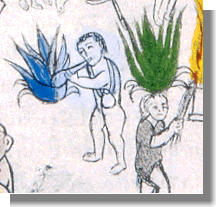 Agave nectar (aguamiel) is harvested primarily in Southern Mexico
from the agave varietal maguey shawii and from other members of the
agave family, most related to the Blue Agave and other maguey species
from which mezcal and sotal are made. However, there is a big difference
in the harvesting process to obtain agave nectar as opposed to the
production of tequila.
Agave nectar (aguamiel) is harvested primarily in Southern Mexico
from the agave varietal maguey shawii and from other members of the
agave family, most related to the Blue Agave and other maguey species
from which mezcal and sotal are made. However, there is a big difference
in the harvesting process to obtain agave nectar as opposed to the
production of tequila.
Agave nectar is usually sustainably harvested from the plant through a
process which extends it’s life for about three years. Just before the
agave grows its quiote, the top section of the piña is cut and scooped
out into a hollow. The agave juice collects in this hollow is harvested
daily. The nectar is then allowed to go through a natural enzymatic
process, similar to honey, which results in a sweeter and thicker agave
juice, somewhat sweeter than honey but with a thinner consistency. It
has an additional advantage: it does not crystalize like honey or maple
syrup.
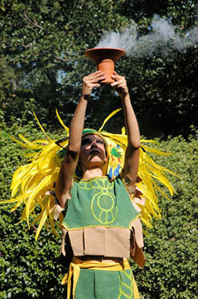 Agave syrup is also quite low on the glycemic index, lower than honey,
and the fructose releases its sugars slowly, so they do not raise
the blood sugar. Agave nectar does not induce the pancreas to produce or
release insulin. This makes agave nectar a great natural sweetener for
anyone concerned about their sugar intake.
Agave syrup is also quite low on the glycemic index, lower than honey,
and the fructose releases its sugars slowly, so they do not raise
the blood sugar. Agave nectar does not induce the pancreas to produce or
release insulin. This makes agave nectar a great natural sweetener for
anyone concerned about their sugar intake.
Agave syrup was also taken to make a low-alcohol, fermented drink
called pulque. This appears to have been done for millennia,
and was a widespread practice. Maya codices depict feasting and drinking
what was probably a form of pulque. Aztec codices also show scenes with
pots brimming over, signifying the fermentation process. These are often
shown with depictions of rabbits, symbolizing fertility and plenty.
Pulque appears in pre-Hispanic "history" about 1000 A.D. A joyous
mural called the "Pulque Drinkers" was unearthed in 1968 during
excavations at the Great Pyramid in Cholula, Puebla, 70 miles east of
Mexico City.
From many graphic indications, it is obvious that pulque was not a new
thing when the mural was painted; the drink is at least 2,000 years old.
It is the sap, called aguamiel or honey water, that becomes pulque
through a natural fermentation process which can occur within the plant,
but usually takes place at a "Tinacal" (place of production).
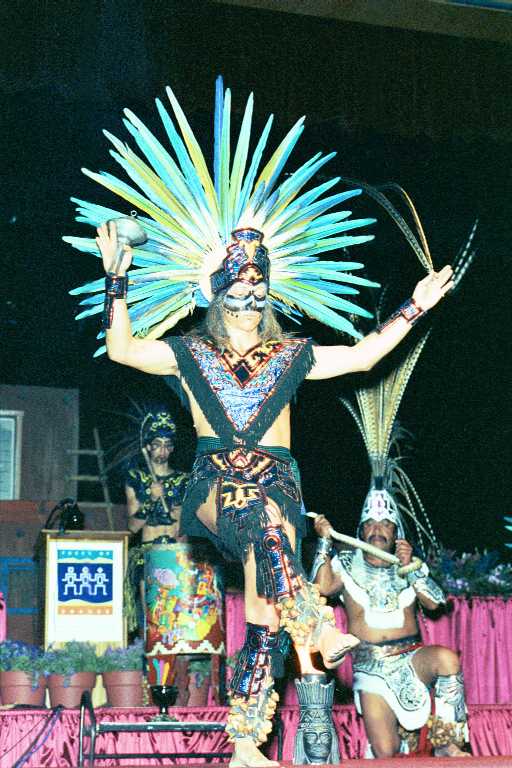 The beverage became such an important element socially, economically
and, as a consequence, religiously, that myths, legends and cults
proliferated around it and its source, the maguey, many of which
continue today.
The beverage became such an important element socially, economically
and, as a consequence, religiously, that myths, legends and cults
proliferated around it and its source, the maguey, many of which
continue today.
In the great Indian civilizations of the central
highlands, pulque was
served as a ritual intoxicant for priests-to increase their enthusiasm,
for sacrificial victims-to ease their passing, and as a medicinal drink.
pulque was also served as a liquor reserved to celebrate the feats of
the brave and the wise, and was even considered to be an acceptable
substitute for blood in some propitiatory ceremonies.
Today the giant pulque maguey (the most common being the San Francisco
Tlaculapan) are first processed after 12 years of growth. Often an
outstanding plant will have an initiation attended by the local governor
in honor of a potentially long production cycle. A good plant can
produce for up to 1 year. The center of the maguey is regularly scraped
out activating the plants production of aguamiel. A local custom for a
man without sons is to process 6 plants, make and drink a special pulque,
and then make sons. The drink is often considered a mythic aphrodisiac.
The name Tlyaol is given to a good strain that makes one particularly
virile. Pulque is frequently the potion of choice used by women during
menstruation and lactation.
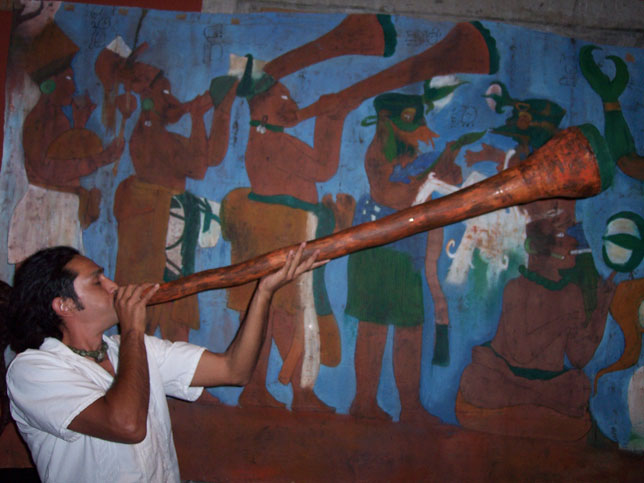 Another
use for agave seldom recognized is as a musical instrument. According to
the
Virtual Analysis of Mayan Trumpets, the Mayans and other indigenous
people used the hollowed quiote of large agave to create an instrument
that appears similar to a didgeridoo. And the
Shakuhachi Society of B.C. is doing just that: making didgeridoos
from agave quiotes (from American agave). So there is a reason to let
them grow naturally, although the market for such instruments is small.
Another
use for agave seldom recognized is as a musical instrument. According to
the
Virtual Analysis of Mayan Trumpets, the Mayans and other indigenous
people used the hollowed quiote of large agave to create an instrument
that appears similar to a didgeridoo. And the
Shakuhachi Society of B.C. is doing just that: making didgeridoos
from agave quiotes (from American agave). So there is a reason to let
them grow naturally, although the market for such instruments is small.
*"Nahuatl" is generally used for the set of
dialects that descended from Proto-Nahua, a.k.a. Proto-Aztecan "Nahua"
refers to speakers of Nahuatl, both as a noun and an adjective. "Aztec"
is a more recent word of uncertain origin, that refers to the Late
Post-classic (1000-1500 CE) Colhua Mexica, their empire, and/or their
entire cultural setting.
Sources
Back to top


